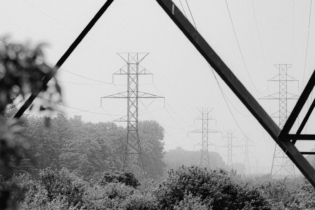Converting biomass to energy has the potential to unlock economic sustainability.
The conversion of biomass into an energy form is one of the oldest technologies known to man. Since the beginning of time man collected wood and other organic combustible items, transported it to a homestead, broke or copped it into more manageable pieces and burnt it to provide heat for cooking, protection and comfort. Recent advances in the Biomass-to-Energy (B2E) conversion technologies have delivered new, more versatile and well-priced plants that allow for the production of an array of tradable commodities. The primary focus of the second generation B2E technologies is to convert waste/residual biomass, including plantation and process waste, alien vegetation and municipal solid waste, into energy products that include solid and liquid fuels, electricity and gasses and can be used to generate revenue and reduce operational costs. “Aurecon has, through our involvement in an array of B2E project across the southern hemisphere, developed a unique and distinguishable B2E offering for a wide range of biomass custodians,” says Aurecon project manager, Jean Bouwer. He explains: “This offering is structured in such a manner that the entire value chain and all cost components from source to market is reviewed, optimised and modelled to allow the client the opportunity to make an informed decision with regard to the pursuit of the identified opportunity.” Key to this service offering is Aurecon’s in-house ‘Integrated Biomass Transport and Logistics Model’. “The transport of feedstock to a conversion plant has in the past been a primary stumbling block in terms of project realisation,” explains Unathi Mdaka, Aurecon project coordinator. “This application was developed to optimise the transport and material handling costs that are traditionally the Achilles heel for B2E undertakings.”Aurecon recently successfully employed its B2E service offerings as a catalyst for economic development and job and wealth creation in one of South Africa’s most impoverished rural communities, Nkomazi. The project began with the Mpumalanga Cane Growers Association contracting Aurecon and the sugar producer TSB Sugar RSA, which markets under the well-known ‘Selati’ brand, to undertake a feasibility study to investigate ways of boosting economic development in the Nkomazi district of Mpumalanga through a B2E solution.
Focused on the need to assist the plight of the previously disadvantaged small-scale sugarcane growers, the study received funding of €100 000 (R1.35 million) from the Energy and Environment Partnership (EEP) Fund, a partnership between the governments of Finland and Austria, hosted by the Development Bank of Southern Africa. The extent of the study was sponsored by Mpumalanga Cane Growers, TSB Sugar RSA and Aurecon. On completion of the feasibility study, the financial model confirmed that the production of ‘Green Charcoal’ from the sugarcane plantation waste for the domestic and international markets is the most feasible solution to pursue. What’s more, the rate of return sparked real interest from the Industrial Development Corporation and the Department of Rural Development and Land Reform’s Enterprise Development Programme. “Aurecon has successfully developed a business model incorporating the latest technologies to bring to reality the processing of sugarcane residues as a viable and entirely new sugar industry opportunity,” says Justin Murray, Grower Affairs manager for the Mpumalanga Cane Growers Association. “The small-scale sugarcane growers in the Nkomazi region at last have real hope of improving their revenue and having a sustainable future in sugar.” Bouwer explains:“The main focus of Aurecon’s B2E service offering is to unlock economic sustainability.” Mdaka concludes: “Aurecon’sB2E service offering can assist a wide variety of stakeholders to achieve economic developments, which enhance the welfare of impoverished communities through the proven creation of jobs, while simultaneously protecting the environment by replacing fossil fuels with cleaner organic fuels and other products.”






